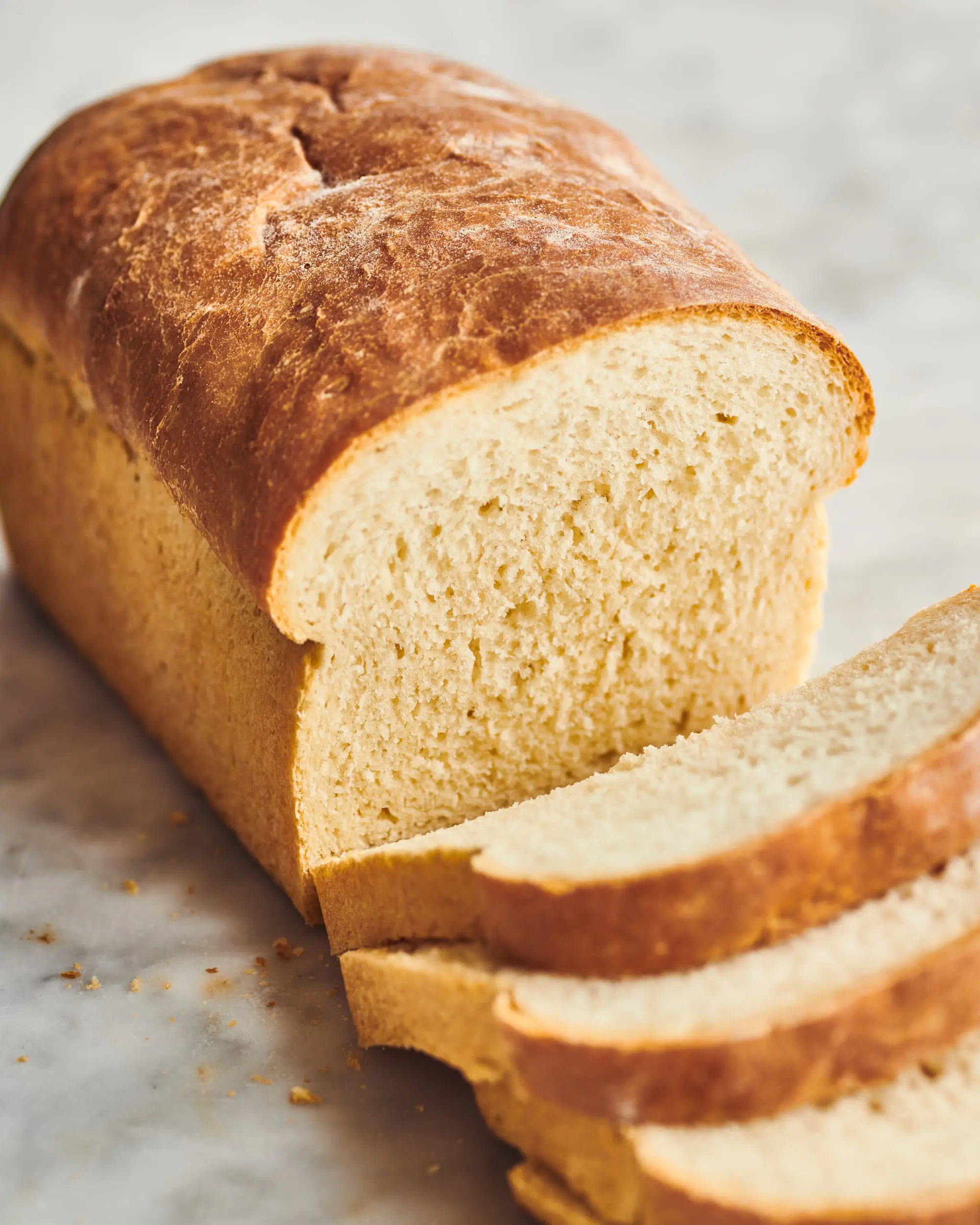Biga and Poolish are both preferment techniques used in pizza dough, but they have key differences in terms of consistency and function. Poolish is a wet sponge made with equal parts flour and water, while biga is a drier solid dough.
This distinction affects the proportions of water and flour used and also influences the final texture and flavor of the pizza. We will explore the characteristics of biga and poolish and discuss their respective benefits in pizza making.
Understanding The Difference Between Biga And Poolish
The world of pizza making is full of different techniques and methods that contribute to the unique flavors and textures we all love. Two of these techniques, Biga and Poolish, are commonly used in pizza dough making to enhance the overall characteristics of the crust. Understanding the difference between Biga and Poolish is crucial for any aspiring pizza enthusiast. In this article, we will explore the definitions and characteristics of Biga and Poolish as well as how they are used in pizza dough making.
Definitions And Characteristics Of Biga And Poolish
Before we delve into the differences between Biga and Poolish, let’s define each technique and understand their unique characteristics.
| Biga | Poolish |
|---|---|
| Biga is a solid dough preferment used in Italian bread and pizza making. | Poolish is a liquid preferment used in baking, particularly in French bread making. |
| The proportions of water and flour in Biga are usually equal or slightly less water compared to flour. | Poolish typically has a one-part-flour-to-one-part-water ratio by weight, making it a fairly wet sponge. |
| Biga is drier compared to Poolish, giving the dough a stiffer texture. | Poolish has a wetter consistency, resulting in a softer and more extensible dough. |
How They Are Used In Pizza Dough Making
Now that we understand the definitions and characteristics of Biga and Poolish, let’s explore how they are used in the process of pizza dough making.
- Biga: Biga is typically prepared by combining flour, water, and a small amount of yeast. This mixture is then allowed to ferment slowly for an extended period, ranging from 12 to 24 hours. The use of Biga in pizza dough imparts a more complex flavor profile and a chewy texture to the crust. It also helps in developing a crispy exterior while retaining a soft and airy interior.
- Poolish: Poolish, on the other hand, requires a shorter fermentation period, usually around 6 to 12 hours. It is made by mixing equal parts of flour and water, along with a small amount of yeast. The use of Poolish in pizza dough results in a lighter and more extensible crust. It adds a depth of flavor and improves the overall texture, making the crust airy and delicate.
Both Biga and Poolish contribute to the development of complex flavors, improved texture, and overall quality of pizza dough. The choice between these techniques depends on the desired characteristics of the crust, such as chewiness, airiness, and extensibility.
Next time you embark on a pizza-making adventure, consider experimenting with Biga and Poolish to elevate your dough to new heights.
The Role Of Biga In Pizza Dough
Biga is a traditional Italian pre-ferment used in pizza dough, renowned for its ability to provide enhanced flavor and texture. Known for being a solid dough, biga differs from poolish, which is a liquid preferment. This distinction impacts the water and flour proportions and influences their function in the final dough. Many pizza makers prefer biga due to its unique characteristics and the positive impact it has on the pizza’s overall quality.
Why Biga Is Preferred By Some Pizza Makers
Biga is favored by some pizza makers for several reasons. Firstly, its drier consistency allows for longer peak holding times compared to wetter sponges like poolish. This gives the dough more flexibility in terms of timing and allows for better planning and preparation. Additionally, biga’s dryness contributes to a crisper crust and a soft, airy cornicione. This combination of textures creates an enjoyable eating experience.
Benefits Of Using Biga In Pizza Dough
Using biga in pizza dough offers numerous benefits. It enhances the flavor profile significantly, thanks to the extended fermentation that occurs during the biga preparation process. This prolonged fermentation allows the flavors to develop and intensify, resulting in a more complex and delicious taste. Moreover, biga improves the dough’s extensibility and structure, making it easier to work with during shaping and stretching. It also contributes to achieving a desirable balance between a chewy interior and a crispy exterior.
The Role Of Poolish In Pizza Dough
When it comes to pizza making, the choice between using biga or poolish in the dough can have a significant impact on the final product. In this article, we will focus on the role of poolish in pizza dough and explore why some pizza makers choose poolish over other options.
Why Some Pizza Makers Choose Poolish
Poolish, a type of pre-ferment, is popular among pizza makers for several reasons. Here are a few:
- Improved flavor: Poolish adds complexity and depth to the flavor profile of the dough. The extended fermentation process allows for the development of unique and nuanced flavors.
- Enhanced extensibility: Poolish improves the dough’s extensibility, making it easier to stretch and shape. This is particularly beneficial for creating thin-crust pizzas with a light and airy texture.
- Increased hydration: Poolish is a wet sponge with a one-to-one ratio of flour to water. This additional hydration translates to a softer and more moist crumb.
Advantages Of Using Poolish In Pizza Dough
Using poolish in pizza dough offers several advantages:
- Enhanced texture: The inclusion of poolish results in a pizza dough with a soft and tender texture. The extended fermentation allows for the development of a delicate crumb with a pleasing chew.
- Improved dough structure: Poolish promotes the development of a well-structured dough, with airy pockets and a light, open crumb. This gives the pizza a visually appealing and airy appearance.
- Better browning and crust development: Poolish contributes to a beautiful crust with a golden brown color. The extended fermentation process enhances caramelization, creating a crisp and flavorful crust.
Overall, poolish is a valuable tool in the pizza maker’s arsenal, providing improved flavor, enhanced extensibility, and a host of other advantages. Its inclusion in pizza dough can elevate the overall quality of the final product, ensuring a memorable dining experience for pizza lovers.
Comparing Biga And Poolish In Pizza Dough Making
When it comes to making delicious, artisanal pizza dough, two popular preferment methods stand out: biga and poolish. While both techniques enhance flavor and texture, they differ in their preparation methods and their impact on the fermentation process and dough development. In this article, we will explore the key differences between biga and poolish and how they affect the final result of your pizza dough.
Differences In Preparation Methods
One significant distinction between biga and poolish lies in their preparation methods. Let’s take a closer look at each:
Biga
Biga is a firm preferment made with a higher ratio of flour to water, typically with one part water to two parts flour. This drier consistency gives biga a stiffer structure, making it easier to handle and store. Its lower hydration level allows the biga to ferment more slowly, developing deeper flavors over time.
Poolish
On the other hand, poolish is a wet sponge made with an equal ratio of flour to water. Its higher hydration level creates a more liquid consistency, resembling a batter. This wetter nature of poolish promotes a quicker fermentation process, resulting in lighter and airier bread or pizza crusts. Poolish is often used when you want a more extensible dough, ideal for achieving thin and crispy pizza crusts.
How Biga And Poolish Affect The Fermentation Process
The difference in hydration levels plays a crucial role in how biga and poolish affect the fermentation process of the pizza dough.
Since biga has a lower hydration level, it slows down the fermentation process, allowing for a longer, more extensive fermentation. This slow fermentation contributes to the development of complex flavors, making biga a preferred choice for those seeking a rich and aromatic pizza crust.
On the other hand, the higher hydration of poolish leads to a faster fermentation process, resulting in a dough with a lighter and airier texture. The quicker fermentation promotes the production of gas bubbles, giving the crust a more open crumb structure, perfect for those who prefer a thin and crispy pizza crust.
Impact On Dough Development And Final Result
The characteristics of biga and poolish not only influence the fermentation process but also impact the dough development and the final result of your pizza.
Biga, with its firm structure, provides excellent dough strength and stability. It contributes to a pizza crust with a chewy texture and a crisp bottom. The slow fermentation also enhances the gluten development, resulting in a more elastic and flavorful dough.
On the other hand, poolish, with its high water content, creates a dough that is easier to stretch and shape. This wetter sponge increases the extensibility of the dough, allowing you to achieve a thin and crispy crust. The fast fermentation also leads to a bread-like texture with a light and airy crumb.
In conclusion, the choice between biga and poolish depends on the desired characteristics of your pizza dough. Biga offers a slow and flavorful fermentation process, resulting in a chewy crust, while poolish provides a quicker rise and a lighter, more extensible dough perfect for thin and crispy crusts. Experimenting with both methods will help you discover the perfect combination of flavor and texture for your pizza creations.
Expert Opinions And Recommendations
When it comes to making the perfect pizza dough, professional pizza makers have their own preferences and insights regarding the use of biga and poolish. Let’s delve into what these experts have to say:
Factors To Consider When Choosing Between Biga And Poolish
- Flavor profile: Biga tends to impart a more pronounced flavor to the dough, while poolish offers a deeper flavor profile.
- Dough texture: Biga results in a slightly drier dough, whereas poolish creates a wetter sponge-like texture.
- Extensibility: Poolish is known for improving a dough’s extensibility, making it easier to stretch and shape.
- Preparation time: Biga can be held longer at its peak, allowing for more flexibility in scheduling, while poolish requires a shorter fermentation time.
How To Determine Which Method Is Best For Your Pizza Dough
Choosing between biga and poolish ultimately depends on your desired outcome and personal preference. Consider the following factors to help you make an informed decision:
- Flavor: If you’re looking for a more pronounced flavor, opt for biga. If you prefer a deeper flavor profile, go for poolish.
- Texture: Take into account the desired texture of your dough. Biga creates a slightly drier dough, while poolish results in a wetter, more extensible sponge-like texture.
- Time constraints: Consider the time you have available for dough fermentation. Biga can be held longer at its peak, allowing for a more flexible schedule, while poolish requires a shorter fermentation time.
- Experimentation: Don’t be afraid to experiment and try both methods to see which one suits your taste preferences and baking style.
Ultimately, the choice between biga and poolish depends on the flavor, texture, and time constraints that align with your preferences. Remember, practice makes perfect, and through experimentation, you’ll find the method that produces the perfect pizza dough for you.

Credit: crumbsinmybeard.ca
Frequently Asked Questions For Biga Vs Poolish Pizza
Why Is Biga Better For Pizza?
Biga is better for pizza because it is usually drier than poolish, allowing it to be held longer at its peak. This results in improved texture, better extensibility, and structure for the dough. It also creates a much deeper flavor profile compared to poolish.
Why Use Biga Over Poolish?
Biga is drier than poolish and can be held longer at its peak. Poolish increases dough extensibility.
Does New York Style Pizza Use Poolish?
New York style pizza can use a poolish, which is a type of starter, for a deeper flavor profile. It can also be made with a commercial yeast pre-ferment such as biga or sponge. Some people prefer not to use sourdough in NY-style pizza.
Is A Poolish In Pizza Worth It?
Using a poolish in pizza is worth it as it enhances the flavor, texture, and structure of the dough. It creates a deeper flavor profile and improves the dough’s extensibility. Consider using a poolish for a delicious and well-rounded pizza crust.
Conclusion
Overall, when it comes to choosing between biga and poolish for your pizza dough, it ultimately depends on the specific characteristics you desire in your crust. Biga tends to produce a denser and more structured crust, while poolish creates a lighter and more extensible texture.
Both techniques have their advantages and can contribute to a delicious pizza. Experimenting with both methods can help you discover your preferred crust style. Happy pizza-making!

As the author of the “Ultimate Pizza Guide: Recipes, Tips & Secrets Revealed,” I’m dedicated to sharing my love for pizza and empowering others to create delicious homemade pizzas with ease. Join me on a journey to uncover the secrets to perfecting your pizza game!



